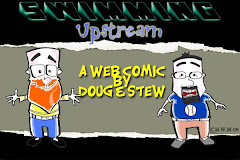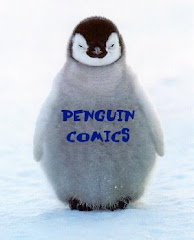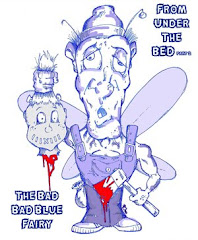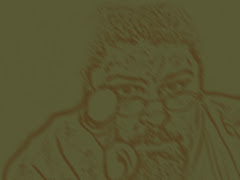I have seen many lists featuring the 'Best Songs' from one band or another, and they typically, if not always, feature the particular band's prominent hits and number 1's. Well, that's all fine and dandy, if you're a raving lunatic! Nothing screams 'cop-out' faster and more overtly than a list featuring a band that only focuses on the overly-radio played best-of's. So, as I jumped feet-first into this Beatles list, I took into consideration each and every one of their albums, and I chose accordingly, often times only picking one from said album leaving a few behind. You will NOT hear, for instance: Lucy in the Sky With Diamonds, I Am the Walrus, or Hey Jude. This list does NOT include Yesterday, The Long and Winding Road, or The Taxman. So, with those six bigger hits out of the way, read on and realize quite a few of this amazing bands far better musical masterpieces. And if you're not an especially huge Beatles fan, well, take this list and consider it a great downloading playlist.
___________________________________________
10) OB-LA-DI, OB-LA-DA (THE WHITE ALBUM)
The song was a conscious homage to the emerging reggae movement (lyrical reference: "life goes on bra"), possibly related to the growing Jamaican population in Britain, although it is heavily blended with honky tonk. Aside from the syncopated beat, the song also employed metre schemes and devices not used in the Beatles' previous works and demonstrated the group's highly experimental nature at the time of its recording.
The song is in the key of Bb major. The structure of the song is as follows:
Intro, Verse, Chorus, Verse, Chorus, Bridge, Verse, Chorus, Bridge, Verse, Chorus, Outro
Though The Beatles album itself (aka: The White Album) is chock full of bizarre and musically different tunes, this one stands out as a sort of new direction for the band that was touched on, though not fully explored, on later attempts.
9) TICKET TO RIDE (HELP!)
The song was written primarily by John Lennon (credited to Lennon/McCartney), with Paul McCartney's contributions in dispute. Lennon said that McCartney's contribution was limited to "the way Ringo played the drums". McCartney said that was an incomplete response, and that "we sat down and wrote it together... give him 60 percent of it... we sat down together and worked on that for a full three-hour songwriting session." Lennon said the double-time ending section (with the lyric "My baby don't care") was one of his "favorite bits" in the song.
This song's downbeat straying into the chords and chorus is just amazing. Oh, and anyone who ever disbeloeved in Paul's ability to harmonize is about to be schooled.
8) ANY TIME AT ALL (A HARD DAY'S NIGHT)
"Any Time at All" is a Beatles song credited to Lennon & McCartney and mainly composed by John Lennon. It first appeared on The Beatles' A Hard Day's Night album.
Incomplete when first brought into Abbey Road Studios on Tuesday 2 June 1964, Paul McCartney suggested an idea for the middle eight section based solely on chords, which was recorded with the intention of adding lyrics later. But by the time it was needed to be mixed however, the middle eight was still without words, and that is how it appears on the LP.
What did get added at the mixing stage was the snare drum "crack" that opens the track (and side two of the album) edited from an unused take.
Whether or not John was unable to hit the higher, 'any time at all' in the second part of the verse remains to be seen, but having Paul do it not only added to the genius but incorporated both vastly different voices.
7) HERE COMES THE SUN (ABBEY ROAD)
The song, one of Harrison's best-known Beatles contributions alongside "Something", originated from a songwriting collaboration between Harrison and close friend Eric Clapton called "Badge," recorded by Clapton's group Cream, and featuring an arpeggiated guitar riff that is similar to the one that forms the bridge of "Here Comes the Sun". 1969 was a difficult year for Harrison: he was arrested for marijuana possession, he had his tonsils removed, and he had temporarily quit the band. The song was written while Harrison was away from all of these troubles. Harrison sang lead vocals and played acoustic guitar, moog, and handclaps. Paul McCartney sang backing vocals, played bass guitar, and handclaps. Ringo Starr played drums and handclaps. John Lennon did not contribute to the song as he was recovering from a recent car crash.
Cementing once and for all -as if there were any doubt to the contrary- that George Harrison is, was, and will forever be a guitar genius.
6) FOOL ON THE HILL (MAGICAL MYSTERY TOUR)
Alistair Taylor, in the book Yesterday, reports a mysterious incident involving a man who inexplicably appeared near him and McCartney during a walk on Primrose Hill and then disappeared again, soon after McCartney and Taylor had conversed about the existence of God; this allegedly prompted the writing of the song.
McCartney played the song for John Lennon during a writing session for "With a Little Help from My Friends," and Lennon told him to write it down. McCartney didn't; he was sure he wouldn't forget it. In his 1980 interview with Playboy, Lennon said, "Now that's Paul. Another good lyric. Shows he's capable of writing complete songs."
This is such a creepy and ethereal song. Just try to imagine someone appearing and disappearing right in front of you prompting a song! So amazing.
5) ELEANOR RIGBY (REVOLVER)
In 1966, McCartney recalled how he got the idea for his song:
“I was sitting at the piano when I thought of it. The first few bars just came to me, and I got this name in my head... 'Daisy Hawkins picks up the rice in the church'. I don't know why. I couldn't think of much more so I put it away for a day. Then the name Father McCartney came to me, and all the lonely people. But I thought that people would think it was supposed to be about my Dad sitting knitting his socks. Dad's a happy lad. So I went through the telephone book and I got the name McKenzie."
Undeniably haunting.
4) YOU'VE GOT TO HIDE YOUR LOVE AWAY (HELP!)
At the time of the release of Help!, Lennon was infatuated with the American singer Bob Dylan. Dylan's 1964 song "I Don't Believe You [She Acts Like We Have Never Met]" opens in strikingly similar fashion: "I can't understand, she let go of my hand, and left me here facing the wall". Lennon seems to mimic Dylan's gruff vocal style, and uses a Dylanesque, all-acoustic accompaniment with very little percussion. The song "is just basically John doing Dylan", McCartney later said.
This clip from the film is so strangly perfect for the song itself. I just love how uninvloved Ringo looks through the whole thing. Oh, and the slightly hidden battle for the woman's afection between George and Paul is great.
3) BLACKBIRD (THE WHITE ALBUM)
The song was recorded 11 June 1968 in Abbey Road studios, with George Martin as the producer and Geoff Emerick as the audio engineer. McCartney played a Martin D 28 acoustic guitar. The track includes recordings of a blackbird singing in the background.
The structure of the song is quite uneven, featuring a good amount of free verse phrasing, with the timing varying between 3/4, 4/4 and 2/4 metres. It is in the key of G, with the bass and melody lines on the guitar progressing mostly in parallel tenths, all the while maintaining an open G-drone on the third string. The song is played with a unique combination of fingerpicking and (a kind of) finger-strumming, though the bass notes are always played by the thumb on the downbeat.
2) I'M LOOKING THROUGH YOU (RUBBER SOUL)
The Beatles recorded three versions of the song in October and November, 1965. The last version was included on Rubber Soul. The original version recorded on 24 October was slower than the released version, had a significantly different rhythm, and lacked the "Why, tell me why..." middle eighth of the final version. It was eventually released in 1996 on the Anthology 2 compilation.
The stereo US version of the song contains a false guitar start.
The mono version on the US Capitol Versions Vol. 2 CD also contains the false start.
1) ACROSS THE UNIVERSE (LET IT BE)
One night in 1967, the phrase "words are flowing out like endless rain into a paper cup" came to Lennon after hearing his then-wife Cynthia, according to Lennon, "going on and on about something". Later, after "she'd gone to sleep—and I kept hearing these words over and over, flowing like an endless stream", Lennon went downstairs and it turned into a sort of cosmic song. He began to write the rest of the lyrics and when he was done, he went to bed and forgot about them.
In the morning, Lennon found the paper on which he had written the lyrics and took them down to his piano, where he began to play chords, and find pitches to match the words. The flavor of the song was heavily influenced by Lennon's and The Beatles' short-lived interest in Transcendental Meditation in late 1967–early 1968, when the song was composed.
Saturday, August 30, 2008
Subscribe to:
Post Comments (Atom)










 Stumble It!
Stumble It!















Really a nice one about the piano and guitar. I think it is not difficult for a beginner to learn to play guitar, the guitar is one of the easiest instruments to learn to play, just know that 65% of the American people know how to play view notes on the guitar.
ReplyDelete